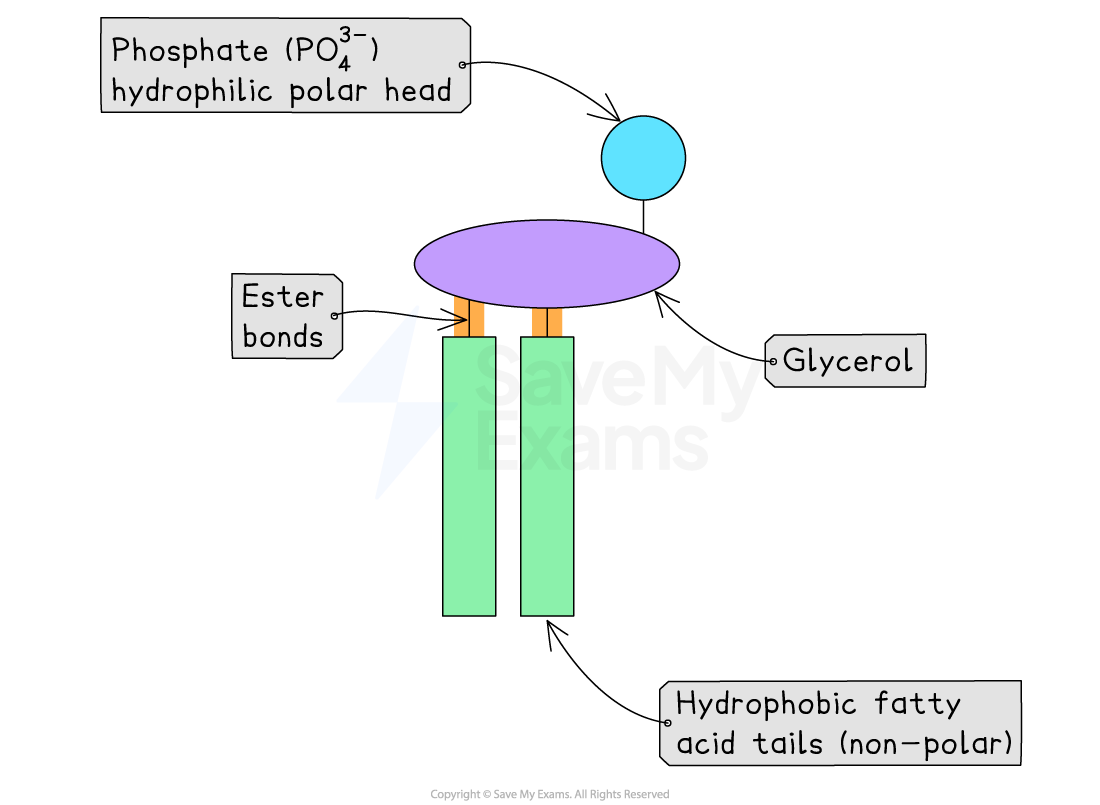Phospholipids (AQA AS Biology): Revision Note
Exam code: 7401
Phospholipids: structure & function
Phospholipids are a type of lipid molecule that are a major component of cell membranes. They are amphipathic, meaning they contain both:
a hydrophilic head
hydrophobic tails
Structure
A typical phospholipid consists of:
one glycerol molecule
two fatty acid chains
These are non-polar and hydrophobic
one phosphate group
This is polar and hydrophilic
Sometimes attached to an additional polar group (e.g. choline)
The fatty acids are bonded to glycerol by ester bonds, while the phosphate group is attached to glycerol via a phosphoester bond

Monolayers and bilayers
As a result of having hydrophobic and hydrophilic parts, phospholipid molecules form monolayers or bilayers in water

Function
Hydrophobic fatty acid tails create a hydrophobic core when a phospholipid bilayer forms
This acts as a barrier to water-soluble molecules
The hydrophilic phosphate heads form H-bonds with water, allowing the cell membrane to be used to compartmentalise
This enables the cells to organise specific roles into organelles, helping with efficiency
The composition of phospholipids contributes to the fluidity of the cell membrane
If there are mainly saturated fatty acid tails, then the membrane will be less fluid
If there are mainly unsaturated fatty acid tails, then the membrane will be more fluid
Phospholipids control membrane protein orientation
Weak hydrophobic interactions between the phospholipids and membrane proteins hold the proteins within the membrane but still allow movement within the layer
Examiner Tips and Tricks
Make sure you also learn which parts of phospholipids are hydrophobic and which parts are hydrophilic, as this is what gives these molecules their useful properties in cells.
You also need to be able to explain the different properties of phospholipids.

Unlock more, it's free!
Did this page help you?